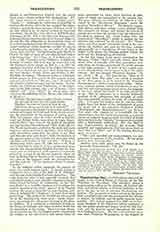

Thanksgiving Day.—A civil holiday observed annually in the United States of America on the last Thursday in November. The president issues a proclamation, calling on the citizens, all Federal officials, and others subject to Federal authority to observe the day as one of national thanksgiving and prayer. The governors of states concur in the president’s proclamation and also recommend the citizens to observe the holiday, and all public business is suspended. The custom originated in 1621, when Governor Bradford of the Plymouth colony appointed a day for public praise and prayer after the first harvest, and the practice spread throughout the other New England colonies. The first national observance was when President Washington, at the request of Congress, recommended Thursday, November 26, 1789, to the people of the United States “as a day of public thanksgiving and prayer to be observed by acknowledging with grateful hearts the many and signal favors of Almighty God“. This proclamation exhorted the people to “beseech Him to pardon our national and other transgressions, to promote the knowledge and practice of true religion and virtue, and to grant unto all mankind such a degree of temporal prosperity as He alone knows to be best”. It was the first observation of the day on the date that present custom holds it. In 1817 Thanksgiving Day was first officially noticed in New York State, and by 1859 its observance had spread to twenty-eight states and two territories. In 1863 President Lincoln made his first proclamation, naming the last Thursday of November as a day of national observance, which day President Johnson also selected in 1867 and President Grant in 1870. Since then there has been no change, the last Thursday in November being named in each year’s proclamation. Catholic recognition of the day by special religious features has only been of comparatively recent date and not as yet (1911) of official general custom. Historians of the day attempt to trace the origin of Governor Bradford’s idea (1621) back to the old Hebrew Feast of the Tabernacles and through the ages to the ancient Greek Harvest Feast, Thesmophoria, the Roman Cerealia, and the English Harvest Home. In the Dominion of Canada the governor-general by proclamation sets aside the last Monday in October as a legal holiday for the purpose of acknowledging God‘s providence and expressing the nation’s dependence on His bounty.
THOMAS F. MEEHAN

